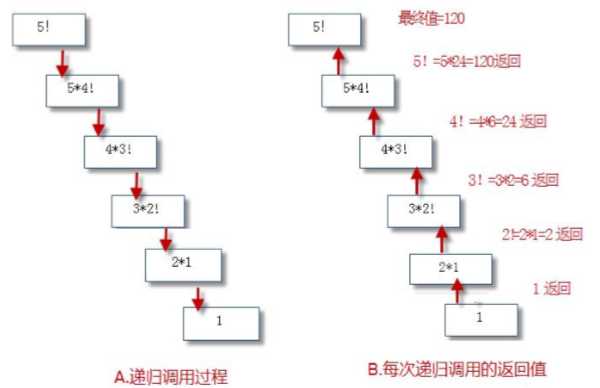标签:ima img mic test code image ret tor 操作
递归函数指的是:自己调用自己的函数,在函数体内部直接或间接的自己调用自己。递归类 似于大家中学数学学习过的“数学归纳法”。
每个递归函数必须包含两个部分:
1. 终止条件 表示递归什么时候结束。一般用于返回值,不再调用自己。
2. 递归步骤 把第 n步的值和第 n-1步相关联。
递归函数由于会创建大量的函数对象、过量的消耗内存和运算能力。在处理大量数据时,谨 慎使用。
【操作】测试递归函数基本原理
#测试递归函数基本原理 def test01(n): print("test01:",n) if n == 0: print(‘over‘) else: test01(n-1) print("test01***",n) test01(3)
运行结果:
test01: 3
test01: 2
test01: 1
test01: 0
over
test01*** 0
test01*** 1
test01*** 2
test01*** 3
【操作】 使用递归函数计算阶乘(factorial)
#使用递归函数计算阶乘 def factorial(n): if n == 1:return 1 return n*factorial(n-1) print(factorial(5)) for i in range(1,6): print(i,"!=",factorial(i))
运行结果:
120
1 != 1
2 != 2
3 != 6
4 != 24
5 != 120

标签:ima img mic test code image ret tor 操作
原文地址:https://www.cnblogs.com/jack-zh/p/10841583.html